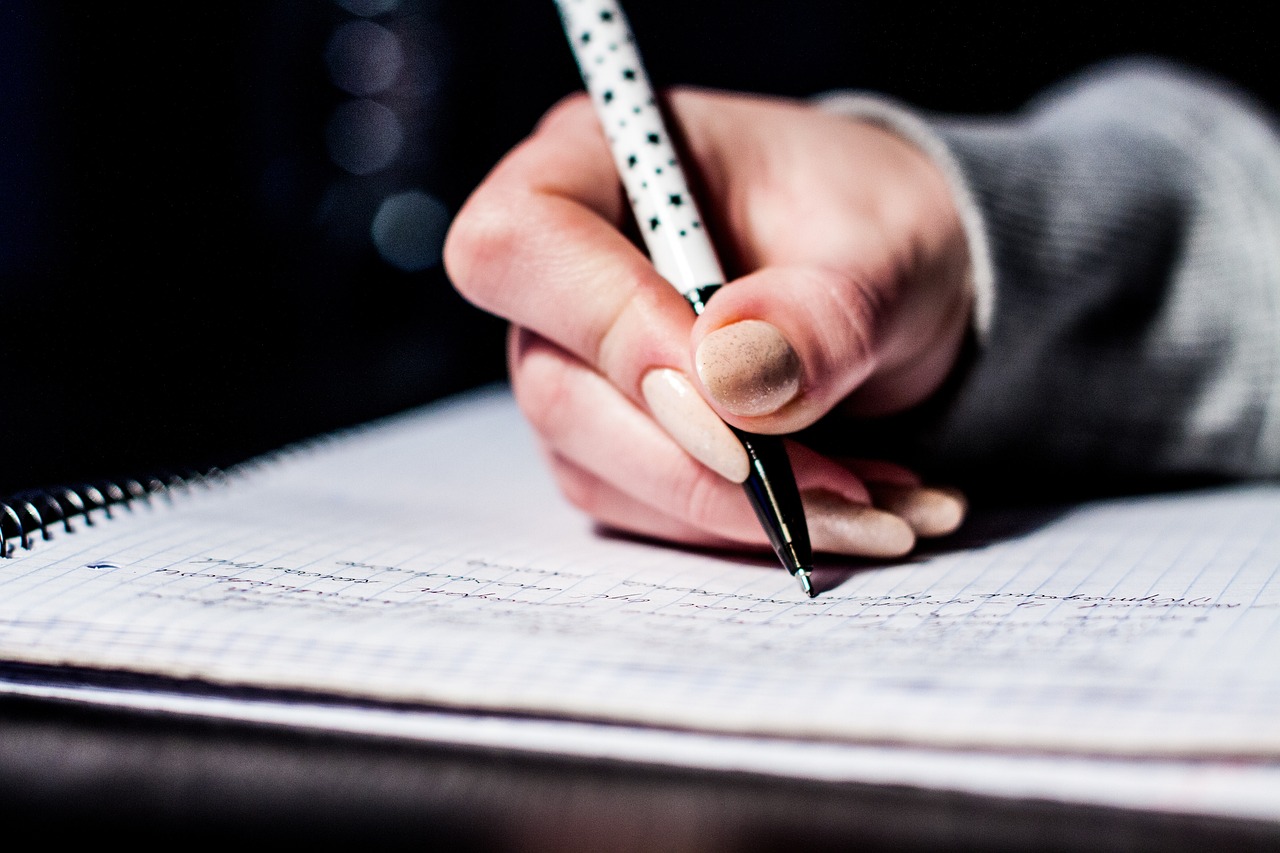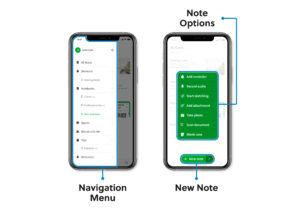
Effective note-taking is a powerful tool that can greatly contribute to your academic and professional success. By capturing key insights, ideas, and action points during lectures, meetings, and other settings, you can improve your learning retention and boost your performance.
But there are some vital things we do ignore, andthat is effective note-taking is crucial for our success in academics and professional settings. Additionally, the methods varies, various note-taking methods can be used to suit individual learning styles and goals.
During the time youll spend reading this article, you will find out that active listening and organization are key components of effective note-taking, and how technology can enhance the note-taking experience and streamline the process for you and me.
Understanding the Importance of Note-Taking
Note-taking is a crucial skill that can greatly enhance your academic and professional performance. By actively engaging in the note-taking process, you can retain information better, improve comprehension, and boost your overall learning outcomes. Effective note-taking helps you:
- Organize and synthesize information
- Identify key points and ideas
- Recall important details and concepts
- Clarify your understanding of complex material
The Benefits of Effective Note-Taking
Research shows that effective note-taking can have significant benefits for learners of all ages and levels. Note-taking also has benefits beyond the classroom. Professionals who take effective notes can:
- Improve their memory retention and recall
- Enhance their ability to analyze and synthesize information
- Stay more engaged during meetings and discussions
- Facilitate collaboration and knowledge-sharing among colleagues
“Note-taking is a cognitive process that helps us understand, retain, and recall new information.” – Dr. Elizabeth Ligon Bjork, Department of Psychology, University of California, Los Angeles
Different Approaches to Note-Taking
Effective note-taking involves using a variety of strategies and techniques to capture and retain information. Here are some approaches to note-taking to help you enhance your learning and improve your academic and professional performance:
1. The Cornell Method
The Cornell Method is a popular note-taking system that involves dividing your paper into three sections: a large section for notes, a small section for cues, and a summary section at the bottom. To use this method:
- Take notes in the large section during lectures or while reading
- Write cue words or questions in the small section to help you remember the information
- Summarize the main points in the summary section at the bottom of the page
This method helps you organize your notes and review information efficiently.
2. The Mapping Method
The Mapping Method is a visual approach to note-taking that involves creating diagrams, flowcharts, or mind maps to connect ideas and information. To use this method:
- Start by writing the main idea in the center of your paper
- Branch out to subtopics, and add details as you go
- Use arrows and lines to connect related ideas
This method is helpful for visual learners or those who prefer a more creative approach to note-taking. It also helps you see connections between ideas and facilitates recall.
3. The Outline Method
The Outline Method is a structured approach to note-taking that involves organizing information in a hierarchical format. To use this method, begin with major points, using Roman numerals (I, II, III). Subdivide the major points into subpoints, using capital letters (A, B, C). Further subdivide subpoints into details, using Arabic numerals (1, 2, 3)
This method is helpful for organizing information and highlighting relationships between ideas. It also helps you review and summarize the material more effectively.
By utilizing these different approaches to note-taking, you can find the method that works best for you and maximize your learning potential.
6 Tips for Active Listening and Note-Taking
Effective note-taking requires active listening. Follow these tips to sharpen your listening skills and enhance your note-taking process:
- Stay focused: Eliminate distractions and maintain focus on the speaker. Avoid multitasking and stay engaged in the discussion.
- Identify key points: Listen for main ideas, supporting evidence, and key details. Be selective and focus on capturing essential information.
- Use abbreviations and symbols: Create your own shorthand to save time and streamline your note-taking process. Use symbols and abbreviations that are meaningful to you.
- Organize your notes: Use headings, numbering, or bullets to organize your notes and create a clear structure. This will make it easier to review and study your notes later.
- Keep up with the speaker: Be an active participant in the discussion and keep up with the speaker’s pace. Don’t fall behind or skip crucial information.
- Ask for clarification: Don’t hesitate to ask for clarification if you don’t understand something. It’s better to ask for clarification than to miss important information.
Enhancing Note-Taking with Technology
Note-taking technology has come a long way, offering a range of tools and applications to suit different learning styles and preferences. Whether you prefer typing, drawing, or recording, there is a note-taking app or software for you.
Let’s explore some of the popular note-taking technologies available:
Google Keep: Google Keep is a simple and easy-to-use note-taking app that is available on all devices. It is perfect for jotting down quick notes, creating to-do lists, and saving voice memos.
Microsoft OneNote: Microsoft OneNote is a powerful note-taking app that is part of the Microsoft Office suite. It is ideal for taking detailed notes, organizing information, and collaborating with others.
Apple Notes: Apple Notes is a built-in note-taking app that is available on all Apple devices. It is a great option for taking quick notes, sketching ideas, and attaching photos and videos.
Evernote: Evernote is a versatile note-taking app that can be used for a variety of purposes, including taking notes, organizing research, and clipping web pages.

The Evernote Application
Bear: Bear is a beautiful and intuitive note-taking app that is available on iOS, macOS, and iPadOS. It is perfect for taking notes, writing journal entries, and creating to-do lists.
Notion: Notion is a powerful all-in-one workspace that can be used for a variety of purposes, including taking notes, managing projects, and collaborating with others.
Obsidian: Obsidian is a note-taking app that is designed for power users. It is perfect for taking detailed notes, organizing information, and linking notes together.
Roam Research: Roam Research is a note-taking app that is designed for connecting ideas. It is perfect for taking notes, researching topics, and generating new insights.
Logseq: Logseq is a note-taking app that is designed for organizing information. It is perfect for taking notes, creating outlines, and managing projects.
RemNote: RemNote is a note-taking app that is designed for learning and spaced repetition. It is perfect for taking notes, studying for exams, and mastering new concepts.
Guide to Organizing and Reviewing Your Notes
Organizing and reviewing your notes is as important as taking notes. Effective note-taking is useless if you cannot find essential information when you need it. Here are some tips for organizing and reviewing your notes:
Create an Outline
Creating an outline is an efficient way to organize your notes. You can use an outline to group related ideas and topics. Start with the main topic, and then break it down into subtopics. This approach makes it easy to find specific information when you need it.
Use Highlighters and Colors
Using highlighters and colors can help you categorize your notes. Assign a color to each topic or category, and use highlighters to identify the most important points. This approach makes it easier to identify key concepts and ideas when reviewing your notes.
Review Your Notes Regularly
Reviewing your notes regularly is crucial for retaining information. Set aside time to review your notes after each class or meeting. This approach will help you identify areas where you need more clarification and reinforce the information you have learned.
Create Flashcards or Summaries
Creating flashcards or summaries is an effective way to review your notes. Condense your notes into key points and create flashcards or summaries for each topic. This approach will help you memorize essential information and recall it quickly when needed.
Visual organizers can help you organize your notes and identify connections between topics. Choose the organizer that best suits your learning style and the type of information you need to organize.
By using these strategies, you can effectively organize and review your notes, and optimize your learning and retention.
Collaborative Note-Taking Techniques
Note-taking doesn’t have to be a solo activity. Collaborative note-taking is an effective technique for capturing more insights, sharing perspectives, and obtaining a more comprehensive understanding of the material.
Whether you’re working on a group project, attending a meeting, or participating in a study group, here are some collaborative note-taking techniques to try:
- Divide and Conquer: Assign different sections or topics to each member of the group. For example, if you’re taking notes for a meeting, one person can focus on action items, another on decisions made, and another on open questions. This ensures that each member captures all the critical information in their area of focus, and the group has a complete set of notes after the meeting.
- Build on Each Other’s Notes: After everyone has taken individual notes, take turns sharing what you’ve written down and building on each other’s points. This is an excellent way to explore different perspectives and identify connections between ideas.
- Create a Summary: Once you’ve collected all your individual notes, work together to create a summary of the key takeaways. This is an effective way to synthesize all the information and ensure everyone is on the same page.
Collaborative note-taking can be done in person, or virtually, through tools such as Google Docs, Microsoft Teams, or Zoom. These tools allow you to share your notes in real-time, collaborate on a document simultaneously, and contribute to the discussion, even if you’re not physically present.
Remember, the key to successful collaborative note-taking is communication and teamwork. Make sure everyone is clear on their role, actively listens to each other, and stays engaged throughout the process.
Common Note-Taking Challenges
Note-taking can be a challenging process, and many students and professionals struggle with common obstacles that can hinder their effectiveness. By acknowledging these challenges, you can implement practical solutions to overcome them and improve your note-taking skills. Here are some tips to help you overcome common note-taking challenges:
Challenge 1: Information Overload
One of the most common challenges in note-taking is managing a large amount of information. When taking notes, it’s easy to become overwhelmed and struggle to identify the most crucial details. To overcome this challenge, focus on identifying the key points and overarching concepts rather than attempting to capture every detail.
Use abbreviations and symbols to condense information. Consider using a symbol key to help you keep track of your abbreviations. Organize your notes using headings, bullet points, or other formatting options to help you identify the main ideas.
Challenge 2: Distractions
Distractions can cause a significant impact on your note-taking process, leading to missed information and reduced comprehension. To avoid distractions, find a quiet and comfortable place to take notes without interruptions. Ensure you turn off your phone or put it on silent mode and stay engaged by actively listening and asking questions.
Challenge 3: Anxiety
Note-taking anxiety can also hinder your performance. Students may feel pressure to capture everything, while professionals might fear missing essential details that can impact their work. To overcome anxiety:
“Remember, note-taking is a skill that can be developed with practice. Don’t be too hard on yourself and remember to focus on the most critical information.”
Take deep breaths before starting and practice relaxation techniques to reduce stress. Remind yourself that note-taking is a tool to help you succeed, not a measure of your intelligence. Attend to what is being said rather than worrying about writing everything down. If you miss anything, don’t be afraid to ask for clarification or repetition.
Applying Effective Note-Taking to Different Contexts
Effective note-taking is an essential skill that can be applied to a variety of contexts, from lectures and meetings to conferences and research. Each setting has unique requirements and challenges, and it’s crucial to adapt your note-taking strategies accordingly.
Note-Taking in Lectures and Classes
When taking notes in lectures or classes, it’s essential to capture the key concepts and ideas presented by the instructor. You can use the Cornell Method to structure your notes effectively and review them later. Consider using abbreviations and symbols to save time and maintain focus during the lecture.
Note-Taking in Meetings
Note-taking in meetings requires active listening and the ability to identify and capture the most important information discussed. Use headings and bullet points to organize your notes and avoid word-for-word transcription. Make sure to capture action items and follow-up tasks to ensure accountability and progress.
Note-Taking in Conferences
Conferences can be overwhelming due to the amount of information presented. Choose a note-taking method that suits your learning style and helps you keep track of the main takeaways. Take breaks and review your notes periodically to reinforce your learning.
Note-Taking in Research
When conducting research, note-taking is crucial to keep track of sources and information gathered. Use dedicated software, such as Evernote or OneNote, to store and organize your notes effectively. Make sure to cite your sources accurately to avoid plagiarism.
Conclusion
Effective note-taking is a crucial skill for success in academic and professional contexts. By incorporating the strategies and techniques discussed in this article, you can enhance your note-taking abilities and achieve greater learning outcomes.
Remember to focus on active listening, choose an approach that suits your learning style, and organize your notes effectively. Utilize technology to streamline your note-taking process and collaborate with peers or colleagues to gain valuable insights.
Overcoming common challenges, such as information overload and distractions, requires discipline and perseverance, but can greatly improve the accuracy and focus of your note-taking.
Image Sources
https://pixabay.com/photos/writing-notes-pen-hand-paper-933262/
https://help.evernote.com/hc/en-us/articles/219433968-Learn-about-the-Evernote-for-iOS-app







